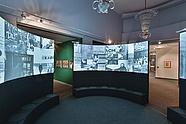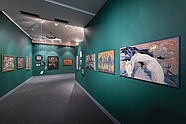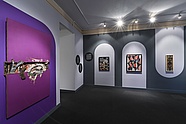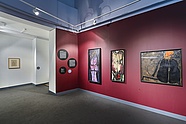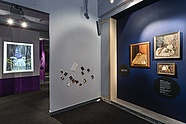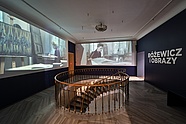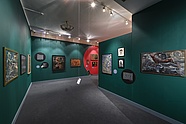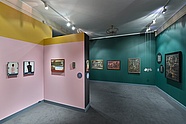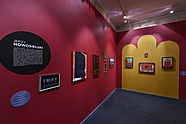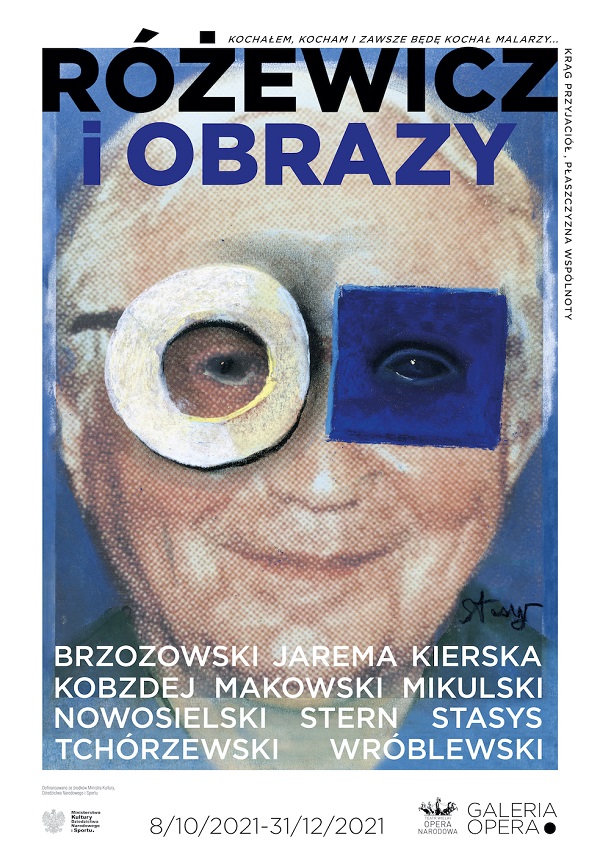 We admire Różewicz as a poet, dramaturge, prose writer, and set designer. We appreciate his extraordinary oeuvre and the influence he exerted on Polish literature. Are we, however, aware of his strong presence in almost all spheres of Polish art? Do we realise his connection with painting? Do we know the people he admired? The exhibition proves that Róźewicz's links with visual artists were close and inspired his poetry. Still as a student, poet Tadeusz Różewicz befriended members of the Second Kraków Group. He cultivated many of the friendships for the rest of his life. Among the people he corresponded with for years were Jerzy Tchórzewski, Jerzy Nowosielski, and Ewa Kierska. Talking to theatre expert Kazimierz Braun, Różewicz said: 'Painting takes up a lot of space in my life. And in my art, too. [...] I spent half of my writing life in museums... Sitting for hours not on a bench in front of paintings, but right inside them... These were my universities... Also, sitting for [...] days and nights in the studios of the greatest of our painters. I did not only look at their pieces, but went to sleep and woke up in their studios... Had long conversations with them... This was avant-garde painting, significant after 1945. Jaremianka, Stern, and the younger ones: Kantor, Tadzio Brzozowski, Mikulski, Jerzy Tchórzewski, Kobzdej, Ewa Kierska, Andrzej Wróblewski, Jerzy Nowosielski. I had closer relationships with them than with my fellow writers. I talked to the painters about the issues of art.'
We admire Różewicz as a poet, dramaturge, prose writer, and set designer. We appreciate his extraordinary oeuvre and the influence he exerted on Polish literature. Are we, however, aware of his strong presence in almost all spheres of Polish art? Do we realise his connection with painting? Do we know the people he admired? The exhibition proves that Róźewicz's links with visual artists were close and inspired his poetry. Still as a student, poet Tadeusz Różewicz befriended members of the Second Kraków Group. He cultivated many of the friendships for the rest of his life. Among the people he corresponded with for years were Jerzy Tchórzewski, Jerzy Nowosielski, and Ewa Kierska. Talking to theatre expert Kazimierz Braun, Różewicz said: 'Painting takes up a lot of space in my life. And in my art, too. [...] I spent half of my writing life in museums... Sitting for hours not on a bench in front of paintings, but right inside them... These were my universities... Also, sitting for [...] days and nights in the studios of the greatest of our painters. I did not only look at their pieces, but went to sleep and woke up in their studios... Had long conversations with them... This was avant-garde painting, significant after 1945. Jaremianka, Stern, and the younger ones: Kantor, Tadzio Brzozowski, Mikulski, Jerzy Tchórzewski, Kobzdej, Ewa Kierska, Andrzej Wróblewski, Jerzy Nowosielski. I had closer relationships with them than with my fellow writers. I talked to the painters about the issues of art.'
The Opera Gallery exhibition includes works of the above-mentioned painters with the poet's 'curatorial' commentary. The aim of the show is to highlight the immense role paining played in the art of Różewicz, who wrote: 'I loved, still love, and will always love painters.' ('Wiersz doktora honoris causa wrocławskiej Akademii Sztuk Pięknych'). It also references Rembrandt and Bacon, whom Różewicz valued greatly, yet whose works could not be part of the exhibition. Complemented with memorabilia, manuscripts, and fragments of the poet's writings, the display is meant to pay tribute to the great man and present him in a new light.







